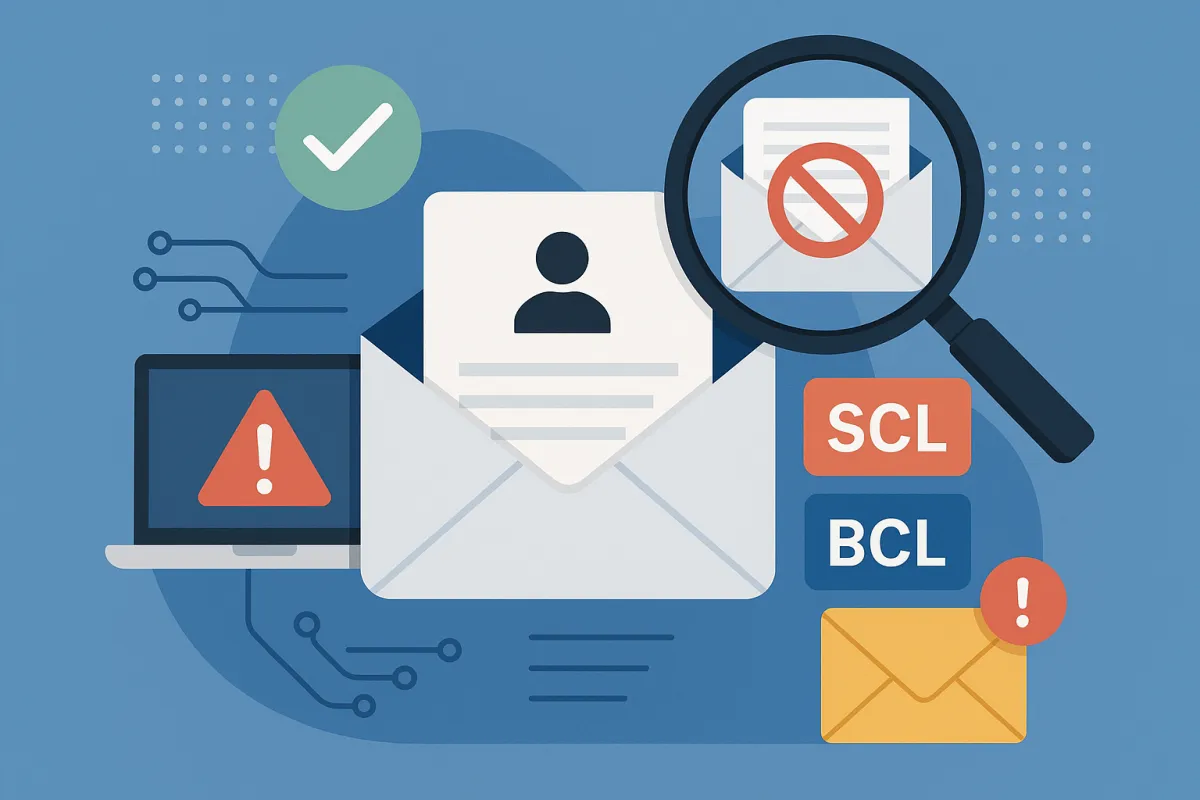
Your Emails Aren’t Broken, Your Copy Is Hurting Your Score
“But I paid for this, why are my emails still going into spam?”
That’s what a client asked us recently. He’d invested in everything: subdomains configured, DKIM and DMARC set up correctly, SPF in place, even a proper email subdomain warmup to build trust with providers.
On paper, the technical setup was flawless. And yet his emails were still vanishing into junk folders.
So, what went wrong?
The hidden scores you’ve never heard of
The answer came down to two acronyms that quietly control whether your message gets seen: SCL (Spam Confidence Level) and BCL (Bulk Complaint Level).
Most small business owners have never heard of them. But email providers like Microsoft and Google use these scores every single day to decide if your message looks safe… or suspicious.
What SCL actually means
SCL (Spam Confidence Level) is Microsoft’s way of rating how “spammy” your email looks. The scale runs from 0 (ideal) to 9 (definitely spam). A score of 0 means your email is trusted. Anything above 3 starts to put you at risk.
When we checked our client’s messages, they were hitting an SCL score of 5. That’s enough for the system to say “no thanks” and reroute them straight to junk.
Here’s the kicker: his setup was fine. His copywriting wasn’t.
Why your words matter as much as your setup
Spam filters aren’t just looking at technical records. They also scan the language inside your email. In our client’s case, his messages were filled with:
Pushy sales lines like “Act now!” and “Don’t miss out!!!”
Paragraphs overloaded with statistics and bold claims.
A tone that felt robotic and desperate rather than helpful.
To a human reader, it might come across as enthusiastic. To a filter bot, it screamed spam.
How to prevent a bad SCL score
If you don’t want to see your emails blocked by SCL, you need to write the way you’d actually speak to a client. Clear, conversational, and human. Here are some practical steps:
Keep subject lines natural. Instead of “Limited time offer!!!” try “A quick idea that might help you.”
Use plain English. Avoid jargon, excessive percentages, or shouting in capital letters.
Limit the numbers. One fact is strong enough, but a wall of stats looks suspicious.
Balance links and text. Too many hyperlinks can trip filters.
Proofread for tone. Ask yourself: would I say this out loud to someone? If not, rewrite it.
The safest emails are the ones that sound like you. When your copy feels genuine, filters are far more likely to give you an SCL of 0, the gold standard for deliverability.
The second filter: BCL
Alongside SCL, providers also use BCL (Bulk Complaint Level). This looks at how many messages you send at once, and how recipients react. If too many people mark you as junk, or if you send too fast, your reputation suffers.
The rule of thumb? Never send more than 50 emails per minute.
Even better, spread them thinner. If you’re emailing 200 contacts, don’t hit “send all” in one burst. Break it into batches of 10 every minute. Within 20 minutes, your whole list has the email, but providers see steady, controlled sending rather than a suspicious flood.
This not only keeps you compliant with best practice, it also makes your emails look more personal. A slower trickle mimics the way a real person might send messages. It also keeps you aligned with PECR rules, which govern how marketing emails should be sent responsibly without spamming recipients.
Tech + copy = inbox success
Great deliverability isn’t either/or. It's both.
Solid technical setup: subdomains, DKIM, DMARC, SPF, and proper email subdomain warmup.
Smart copywriting: writing like a person, not a billboard.
Our client’s story proved that you can’t just “buy” your way into inboxes with setup alone. The words you use matter every bit as much as the records behind them.
Ready to stop emails slipping into spam?
This is a big topic, and the right approach depends on your business, your audience, and the tools you’re using.
If you’d like practical help making sure your emails actually land where they should, book a free discovery call with us here. We’ll walk you through the technical essentials and show you how to write in a way that filters (and clients) actually trust.
#TrulyYoursAgency #EmailDeliverability #SmartCopy
